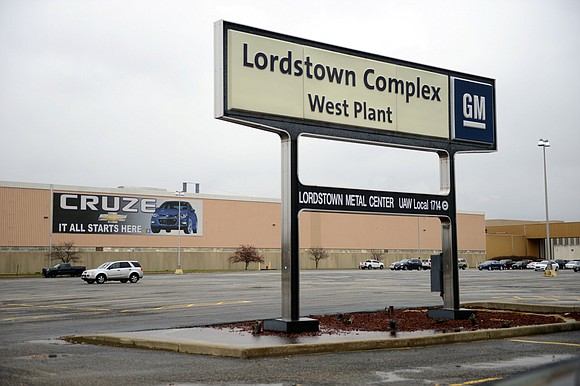Without GM, Lordstown, Ohio, will never be the same
CNN/Stylemagazine.com Newswire | 11/27/2018, 10:16 a.m.

By Julia Horowitz, CNN Business
(CNN) -- When the first Chevrolet Impala sedan rolled off the line at General Motors' plant in Lordstown, Ohio, on April 28, 1966, Lyndon Johnson was president. Anti-Vietnam War protests were gaining strength. The Beatles were just months away from playing their final concert in the United States.
Sixteen million vehicles later, the Lordstown plant could be deserted.
General Motors announced Monday that it will shutter production at five facilities in North America next year. That includes the sprawling, 6.2 million-square-foot plant in Ohio's Mahoning Valley, which currently makes the Chevy Cruze sedan.
Union leaders and local officials hope GM will change its mind and slot another vehicle for the plant before the facility is idled next March.
The decision to stop production at the factory was popular among GM (GM) shareholders, who embraced a plan for a slimmed-down, future-looking company. But the plan looks grim for Lordstown. Workers in the town, which was once a bustling industrial hub, seem all but certain to become a casualty of GM's plan to reinvent itself.
"We have a great product, but we have it at the wrong time," Lordstown Mayor Arno Hill told CNN Business.
General Motors, the largest of the "Big 3" US automakers, is a vital employer in the communities where it established its plants. In Lordstown, for example, GM is responsible for more than 1,600 jobs.
That number swells to about 5,000 when you consider the plant's impact across Ohio, including those who work at auto parts suppliers, according to James Dignan, president of the Youngstown/Warren Regional Chamber, the top economic development group in the region.
"GM is by far is our largest production and manufacturing facility," Dignan said.
After more than half a century in Lordstown, GM has become a foundational part of the local economy, even though the number of employees at the plant has dwindled.
Some large businesses in the greater Youngstown area depend on Lordstown employees, such as the Mercy Health and Steward Health Care systems, which Dignan said are the top two employers in the region. There's also the military's Youngstown Air Reserve Station.
And TJX (TJX), the department store company that owns HomeGoods, Marshalls and TJ Maxx, is building a distribution center across the Ohio Turnpike from the Lordstown plant. It is scheduled to open in 2020 and is expected to create 1,000 jobs, Dignan said. But that's not a substitute for General Motors.
"We don't want those [jobs] to replace GM," Dignan said. "They're not apples for apples."
The TJX positions will require different skills and have a separate pay scale. It's not clear if they will be union jobs.
Should GM keep its plant in the Mahoning Valley dormant, it would hit the whole community, according to Dignan. The local population would shrink, leading to a lower tax base, he said. Restaurants and bars would have fewer patrons.
President Donald Trump promised to break that familiar dynamic for the union workers who abandoned the Democratic Party to vote for him in 2016. The President openly castigated GM CEO Mary Barra, telling reporters that she needed to find a way to reopen in Ohio -- by replacing the Cruze with something that would sell better.
But that is exactly what Barra says she's doing -- just not necessarily in Lordstown, leaving local leaders at a loss.
Deep roots
GM's Lordstown plant attracted national attention in 1972 when the plant's employees went on strike. The action led to the coining of a new phrase, "Lordstown Syndrome" — referring to the malaise and depression of young workers who worked on monotonous assembly lines.
Lordstown would remain a contentious location for GM years later. The company reportedly considered shutting it down by 2002 as part of a broader consolidation effort. But GM ultimately decided to keep the factory open. It survived even after GM filed for bankruptcy protection in 2009, which required a massive bailout from the federal government.
GM announced that the factory — which over the years has built vehicles such as the Chevrolet Vega, Pontiac G5 and Chevrolet Cobalt — would go down to a single shift earlier this year. It ran around the clock as recently as 2016.
Just last week, the local chapter of United Auto Workers launched a statewide campaign called "Drive It Home" to protect GM jobs in Lordstown.
The union is still "hopeful," Dave Green, president of UAW Local 1112, said Monday. Efforts to persuade GM to make another vehicle in Lordstown are already underway.
"We are determined to do everything we can to convince General Motors to make Lordstown part of the future of auto manufacturing for this great company that we have been like family with for 52 years," Green said in a statement.
Hill, the mayor of Lordstown, also vowed to keep fighting.
"They announced today they were ceasing production, but they didn't tell us they were terminally shuttering the place," he said. "So that tells us we still have a pulse."




